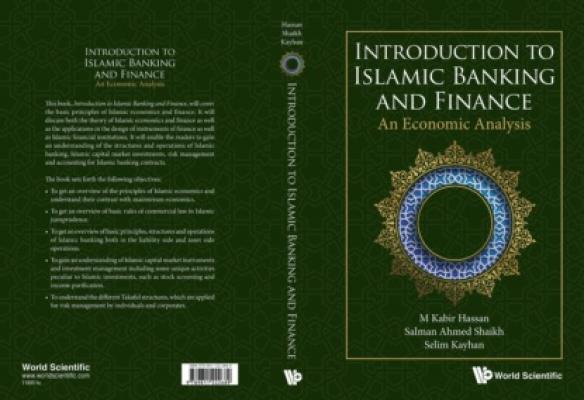Introduction to Islamic Banking and Finance. M Kabir Hassan
Читать онлайн.| Название | Introduction to Islamic Banking and Finance |
|---|---|
| Автор произведения | M Kabir Hassan |
| Жанр | Банковское дело |
| Серия | |
| Издательство | Банковское дело |
| Год выпуска | 0 |
| isbn | 9789811222702 |
1.1.8Islamic insurance
Takaful is an Islamic substitute for conventional insurance. The conventional insurance includes the element of interest-based investments as well as resemblance to gambling since the payoffs are contingent on some future probabilistic events. Takaful avoids the element of interest by only resorting to investments that are permissible in Islamic law and which avoid Riba (interest), Maysir (gambling), and Gharar (uncertainty). Rather than paying premiums to a company, the clients contribute voluntary donations (Tabarru) in a pool of funds in Takaful. This pool of funds is managed by a Takaful operator or managing firm. In practice, if the Takaful operator only works as an investment agent and to process claims on behalf of all clients, then the agency (Wakalah) model is used to organize and structure the Takaful. On the contrary, if the Takaful operator not only works as an investment agent and to process claims on behalf of all clients as an agent but also as a partner, then the Mudarabah model is used to organize and structure the Takaful. In the Mudarabah model, the compensation to the Takaful operator is primarily based on the performance of investments. On the contrary, in the Wakalah model, the compensation to the Takaful operator is fee based.
In global Islamic finance assets, the share of Takaful is 2%. With a CAGR of 6%, Takaful assets have grown from $31 billion to $46 billion in 2017 as compared to 2012. Globally, there are 322 Takaful operators working in 47 countries.
Table 1.5. The distinction of Waqf from other social finance institutions.
1.1.9Islamic Awqaf
Waqf is one of the important institutions in Islamic social finance. In Waqf, the owner of some asset or property permanently dedicates an asset along with its usufruct and benefits to a particular social cause voluntarily. This enables the society at large to benefit from Waqf assets. In modern practice, Waqf can be established through movable as well as immovable assets. Using liquid assets like cash, Waqf can be used to mobilize funds for establishing institutions like schools and hospitals. It can also enable the divisibility of the social investments in Waqf and enable people at large to contribute to Waqf even if they do not wholly own a valuable tangible fixed asset or property. Table 1.5 gives the distinctive features of Waqf in comparison to Zakat and Sadaqah.
1.2Conclusion
This chapter has introduced the basic foundational principles and economic value proposition of Islamic finance. It has provided a brief look at the variety of Islamic finance institutions that are operating globally. The recent statistics on the Islamic finance industry exhibit exemplary growth and penetration in the Muslim as well as non-Muslim customer base in banking, investments, and insurance. In later chapters, the product structures on which these institutions operate will be explained in more detail.
Self-Assessment Quiz
1.Riba encompasses usury as well as:
(a)Any stipulated amount charged over the principal amount in a loan contract
(b)Any profit or mark-up in the credit sale of commodities
(c)Any amount of profit in a commercial contract
(d)All of the above
2.The economic rationale of prohibiting Gharar is to avoid:
(a)Uncertainty in the contract
(b)Adverse selection
(c)Any party gaining some additional return
(d)Both (a) and (b)
3.Prohibition of Maysir implies that:
(a)Gambling and lottery are disallowed
(b)All credit sales are disallowed
(c)All types of speculative trades on forecasts are disallowed
(d)All of the above
4.In a direct potential exchange between saving-surplus and saving-deficient units, there is a problem of
(a)Double coincidence of wants in terms of matching cash flow needs
(b)Matching preference for maturity in investment and financing
(c)Both (a) and (b)
(d)None of the above
5.Takaful is an Islamic alternative of insurance which avoids
(a)Riba
(b)Maysir
(c)Both (a) and (b)
(d)None of the above
Self-Assessment Questions
1.List any two examples of goods and services that are not Halal in terms of (i) consumption and (ii) investment.
2.List any five means of earning income that are not permissible in Islamic economics.
3.List the five important elements in the hierarchy of needs in Islamic jurisprudence.
4.Define the term Riba. How does bank interest constitute Riba?
5.Illustrate the Islamic finance ecosystem by identifying institutions in Islamic commercial finance and Islamic social finance.
6.What is the size of assets in (i) Islamic banking, (ii) Islamic asset management, and (iii) Takaful globally.
7.Differentiate between Zakat, Waqf, and Sadaqah.
8.How is Takaful different from conventional insurance?
9.Identify social welfare projects which can be funded by mobilizing funds through Cash Waqf.
10.Briefly explain the economic demerits of Gharar and Maysir in economic activities.
__________________
1 Al-Qur’an, Al-Baqarah: 276.
2 Al-Qur’an, Al-Baqarah: 188.
3 Al-Qur’an, Al-Mutaffifeen: 1–4.
4 Al-Qur’an, Al-Maida: 90.
5 Al-Qur’an, Al-Maida: 38.
6 Al-Qur’an, Al-Maida: 90.
7 Al-Qur’an, Al-Nur: 19.
8 Al-Qur’an, Al-Nisa: 29.
9 Jami-al-Tirmizi, Vol. 3, Chapter on Business, Hadith Number 1209.
10 Jami-at-Tirmidhi, Vol. 2, Chapters on Zakat, Hadith Number 680.
11 Sunan Abu Daud, Vol. 2, Book of Zakat, Hadith Number 1648.
12 Jami-at-Tirmidhi, Vol. 2, Chapters on Zakat, Hadith Number 653.
13 Al-Qur’an, Al-Baqarah: 168.
14 Al-Qur’an, Al-Baqarah: 219.
15 Al-Qur’an, Al-Baqarah: 276.
16 Al-Qur’an, Al-Maida: 90.
17 Al-Raysuni, A. (2005). Imam Al-Shatibi’s. Theory of the Higher Objectives
